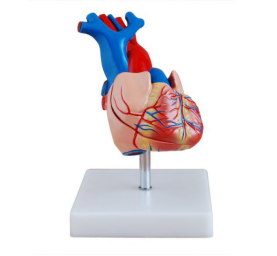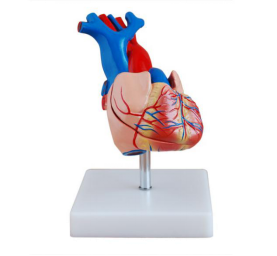In the field of medical education, cardiac anatomy model, with its unique advantages, has gradually surpassed the traditional teaching methods and become a new favorite to attract students' attention. Here are some reasons why the heart anatomy model is more appealing to students than traditional teaching.

First, the anatomical model of the heart is highly intuitive and three-dimensional. Compared with the traditional two-dimensional picture and text description, the model can truly simulate the three-dimensional structure of the heart, so that students can intuitively see the various parts of the heart, blood vessels, valves and other structures, so as to better understand and master the complex structure of the heart. This intuitiveness greatly reduces the difficulty of learning, making it easier for students to master the knowledge of cardiac anatomy.
Secondly, the cardiac anatomy model is interactive and operational. While traditional teaching methods are often one-way and infusion-style, the heart anatomy model provides an open learning platform that allows students to participate in the learning process. Students can touch, observe the model, and even perform simple disassembly and assembly to gain a deeper understanding of the structure and function of the heart. This interactivity and maneuverability not only enhances students' interest in learning, but also helps them better understand and remember what they have learned.
In addition, cardiac anatomical models are flexible and versatile. Different models can simulate the heart in different states, such as normal heart, diseased heart, etc., so that students can fully understand the changes of the heart in different states. At the same time, teachers can flexibly adjust the teaching methods and contents according to the needs and interests of students, so as to better meet the learning needs of students. This flexibility and variety makes the heart anatomy model an efficient and personalized teaching tool.
Finally, the anatomical model of the heart can help students develop clinical thinking. By observing and operating models, students gain a deeper understanding of the structure and function of the heart, thereby building an intuitive understanding of heart disease. This kind of clinical thinking has important guiding significance for the future clinical practice of medical students, and can help them better understand and deal with heart disease.
To sum up, the heart anatomy model has gradually surpassed the traditional teaching methods and become a new favorite to attract students' attention with its advantages of intuitiveness, interaction, flexibility and clinical thinking training. In the future medical education, cardiac anatomy model will continue to play an important role in cultivating outstanding medical talents.

